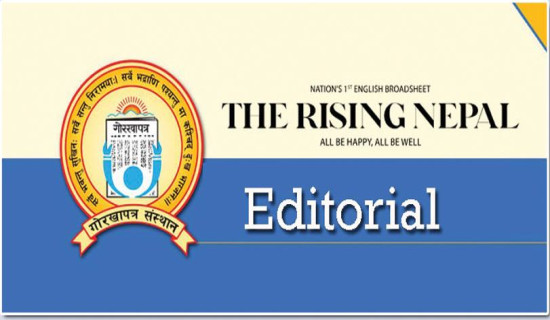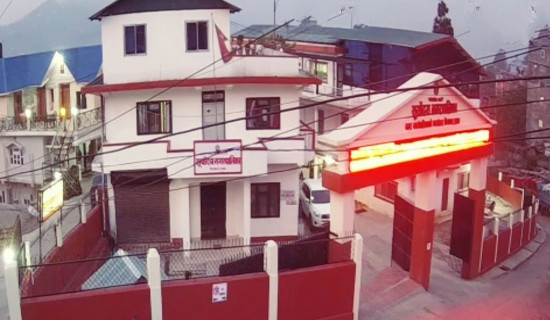- Tuesday, 26 August 2025
Disaster Preparedness
Nepal is among many nations vulnerable to rain-induced disasters such as landslides, flash floods and inundations. The country records erratic rains and downpours that cause a considerable number of human casualties and huge damage to property during the four-month monsoon. Generally, the rainy season sets off in the second week of June and lasts till the last week of September. The monsoon rains become very hazardous almost every year in the country with her fragile ecosystems. With the start of monsoon rains in June last year, many people lost their lives while scores of others became homeless in different parts of the country. The floods in the Melamchi and Yangri rivers were very devastating as they damaged dozens of houses in Melamchi Bazaar and nearby areas and swept away several bridges. More than 100 households were displaced by the floods.
The floods also caused colossal damage to the Melamchi Water Supply Project (MWSP), depriving the Kathmanduites of drinking water supply for months. The government had to mobilise workforce for several months and spend a lot of money to reconstruct the headwork of that national pride project and other essential infrastructures. Owing to the effects of climate change and global warming, rains have become very unpredictable. In what could be a rare incident, the country reeled from downpours even in October last year. The disasters triggered by the unseasonal rains took more than 100 lives in the Karnali catchment while almost 3,000 people were displaced from the Mahakali River basin. Besides, the Biratnagar Airport remained closed for four days since its runway was inundated.
The sudden autumn rains also destroyed ready-to-harvest paddy crops planted in hundreds of thousands of hectares of land across the country. Farmers in the Terai districts alone suffered an enormous loss. One of the reasons behind an exorbitant rise in prices of food in the country at present is partly attributed to that calamity. The Meteorological Forecast Division at the Department of Hydrology and Meteorology (DHM) has predicted that the country is likely to witness more than average rainfall this year. Different parts of the nation, including the Chure range, may record an additional amount of rains in the upcoming monsoon. Needless to say, the nation has also seen a change in the pattern of rainfall over the past two decades. Experts say that certain areas record heavy rains in a short period, triggering destructive flash floods there.
According to a news report carried by this daily on Thursday, sub-seasonal forecasting models have hinted that there are chances of 20-30 per cent above-average rainfall in the west this season. This prediction, however, might not be fully accurate. The northern part of Province 1, most parts of Madhesh Province and the southern parts of Bagmati Province may have 35-45 per cent chance of average rainfall while the remaining parts could have 35-65 per cent chance of above-average rainfall. An estimated 1.7 million people could be affected by this year's monsoon. With the monsoon just round the corner, the National Disaster Risk Reduction and Management Authority (NDRRMA) under the Ministry of Home Affairs has intensified its preparedness for deal with the potential disasters. The NDRRMA is collecting suggestions and schemes from all the relevant ministries, other governmental and non-government organisations, provincial and local governments to prepare a more effective disaster preparedness plan for this year. All the responsible authorities must formulate comprehensive preparedness plans by learning from the past and implement them accordingly.

















